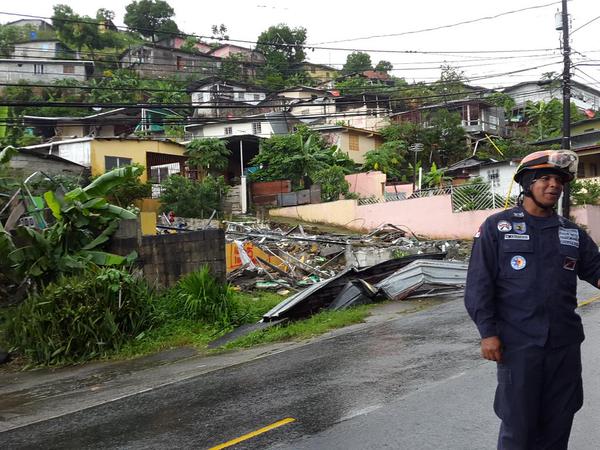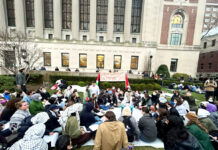
A president with a reputation for going slowly with almost everything quickly gets Panama into a state of emergency disaster response mode, before we start talking about death tolls
Quick reactions to storm damage as the height of the rainy season approaches
by Eric Jackson
On September 16 the Cabinet Council issued a decree declaring an emergency in the San Miguelito corregimiento of Belisario Porras and the Panama City corregimiento of Juan Diaz, both affected by flooding and other storm damage, the former the scene of landslides that have affected about 90 homes in the hillside neighborhood of Samaria. A few days earlier the government took similar measures in the Colon neighborhood of Nueva Italia, where homes began to slide down the hill on which they were built.
For some years now there has been a mantra heard among international agencies and public safety first responders’s that maintains that there is no such thing as a natural disaster. There is, of course, but it’s neither the creator’s devout advocates nor those so irreligious as to want to take divine references out of the language who are behind the objections to the concept of an “Act of God.” While it is acknowledged that elemental forces beyond our control may send us floods or drought, destructive winds or damaging earthquakes, the argument goes that most of the property losses, deaths and suffering are due to human errors that put people in the way of reasonably foreseeable natural events. That sort of consciousness has been taking Latin America by storm for years now, and it’s why hurricanes tend to destroy dysfunctional and unprepared Haiti worse than their poor but prepared neighbors in Cuba. It’s why Chile had a September 16 earthquake that registered 8.3 on the Richter Scale and set off tsunami waves but only about a dozen people died — Chile may have billions in property losses and some human tragedies to address, but they also have building codes that mean something and coastal evacuation plans that work in an instant.
Panama’s President Juan Carlos Varela may be an industrial rather than a civil engineer by training, but he seems to know about such things. It doesn’t mean that everything is under control or that all of the problems that make Panama more disaster-prone were inherited from prior administrations. (Surely the devoutly Catholic president will have heard about people who build on the sand, but has he figured it out that the same thing applies to those who would build on the mangrove swamps of Coco del Mar?)
In any case, Varela inherited the leadership of a country in which houses have been built on steep and unstable hillsides and on flood plains. He’s president of a country in which a lot of his constituents see a storm drain as a place to dispose of plastic grocery bags. His office gets complaints from voters who say that their houses flood because of things that people did to nearby rivers.
What Varela may eventually do about building and zoning codes or the solid wastes that clog the metro area’s storm sewers remains to be seen. However, on his watch the SINAPROC disaster relief agency has been quick to respond. When houses started to crack and slide away in places like Colon’s Nueva Italia and San Miguelito’s Samaria, inspectors were quick condemn not only the obviously broken houses but whole neighborhood built atop unstable slide zones. We will surely hear complaints in the days ahead, but the Varela cabinet has authorized emergency contracts and housing grants to get the dozens of displaced families back in livable homes again. The Ministry of Housing and Land Management (MIVIOT) has been put in charge of coordinating a disaster response effort on several fronts.
MIVIOT engineers, and perhaps consultants hired under the decree that dispenses with the usual bidding process, are studying the causes of the floods and landslides and in the affected areas they have been given something approaching a blank check to demolish problem structures and build drains, slabs and other public works that might alleviate the local problems. The ministry has also been put in charge of acquiring land and building permanent new homes for those left homeless, and to rent temporary shelter for them in the meantime.
The emergency resolution also puts the Ministry of Public Works (MOP) to work on dredging and changing the channel of the Matias Hernandez River, from whence the flood waters that routed many Juan Diaz residents from their homes arose. The initial appropriation of $10 million that was included in the decree will only start to get the work done.
Meanwhile the SINAPROC disaster relief agency and the bomberos have been putting in overtime hours to respond not only to flooding and landslides, but to roads blocked and homes damaged by blown-over trees. Varela himself isn’t saying much about fast responses, but the agencies that are moving in to handle the problems are pointing that out.










